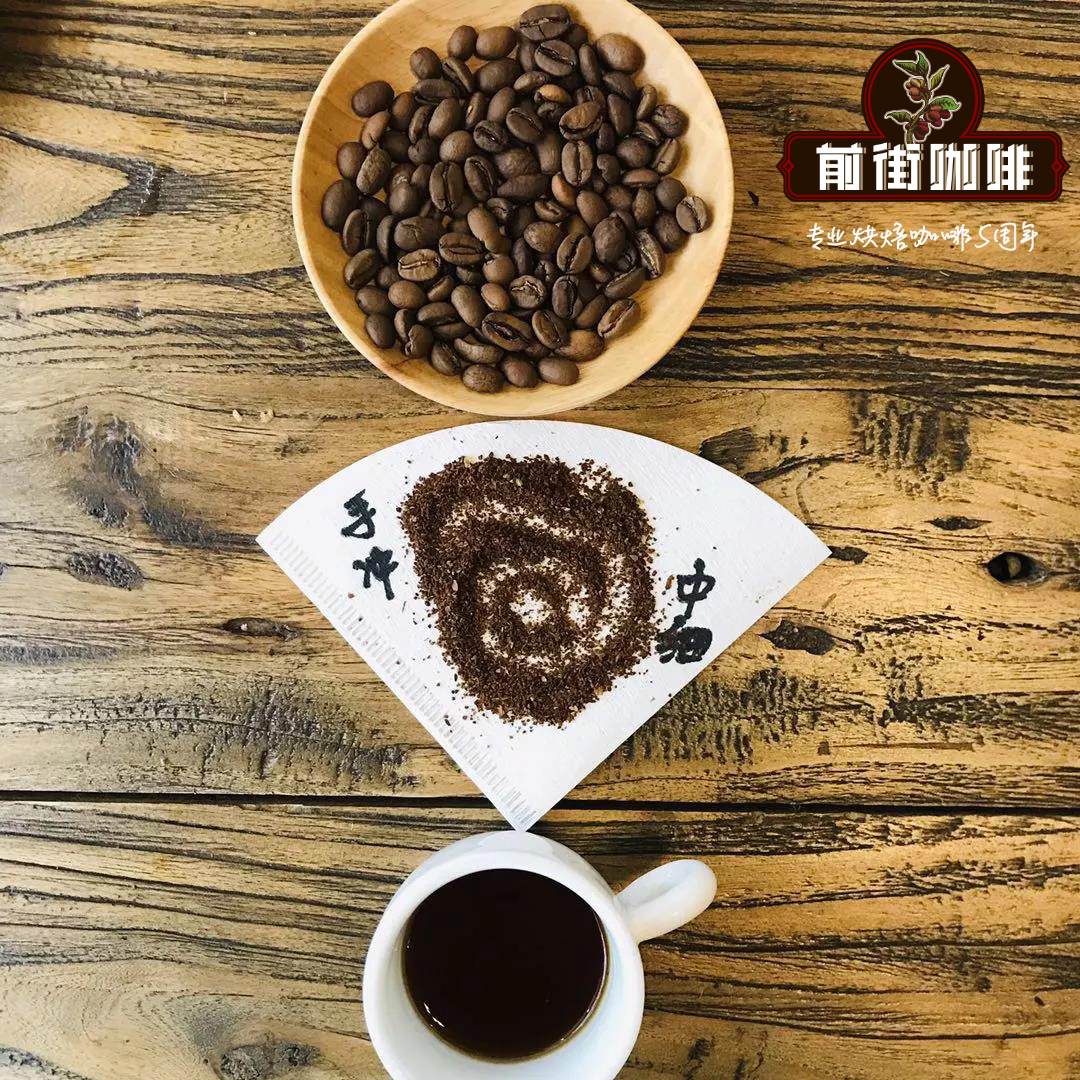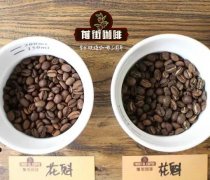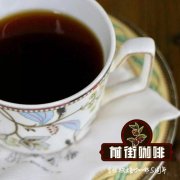Does the wild Yemeni mocha taste good or not? Yemeni mocha coffee tastes good.

Professional coffee knowledge exchange more coffee bean information please follow the coffee workshop (Wechat official account cafe_style)
[preface]
Yemen is located at the southwestern tip of the Arabian Peninsula, bordering Saudi Arabia and Oman, bordering the Red Sea, the Gulf of Aden and the Arabian Sea. Yemeni mocha coffee is the oldest coffee in the world, and Yemen is one of the first countries in the world to grow coffee. It is said that as early as 1561 AD, Zheng he brought back a lot of mocha coffee to pay tribute to the Ming emperor.
Historical stories:
As early as more than 500 years ago, Yemen produced coffee in an ancient way. In the early 17th century, the first batch of Yemeni coffee sold to Europe was exported through the ancient port of Mocha, which surprised Europeans. The delicious coffee shipped from the port of Mocha was called "mocha coffee", which is the origin of the name "mocha coffee".
It is said that the place where Europeans imported coffee for the first time in the 17th century and spread to the world was the world's largest coffee port, the port of Mocha. Neighboring Ethiopia, which looks across the Red Sea, also sells coffee through the port of Mocha, so Ethiopian sun-treated coffee is often called mocha. Although Ethiopia was the first country in the world to discover coffee, the first country in the world to produce coffee on a large scale as a crop was Yemen. Because all exported coffee sacks had to be marked with MOCHA to prove that they were transported from the port of Mocha, Europeans called the delicious coffee shipped from the port of Mocha "mocha coffee". (such as Mocha-Hara EthiopiaHarrar)
Today, the old port of Mocha has long been abandoned because of sediment deposition (today's place name Al Makha). It has become a historic port with only white beach left, and it is exported to the northwestern port of Hodeida. However, people have long been accustomed to the name of Mocha, which is famous to the sky. Yemeni mocha is the originator of the world coffee trade. It plays an important role in promoting delicious coffee to Yemen all over the world. It is called "Arabica Coffee (Arabia)", which is the origin of the name "Arabica Origin".
Yemeni coffee is rich in flavor, complex, wild, mellow, strong fermentation and low acidity, coupled with the fact that Yemeni coffee often contains an uncertain factor (the time of rain in the season). It is not too much to call her the most special coffee in the world.
Production season: October-December
Ancient method of sun treatment:
Yemen is a classic of the ancient morning taste of the sun, and it is also the only producer of full-time coffee in the world. the traditional treatment of dripping water is illegal, and it has not changed since Europe became infatuated with game mocha in the 17th century. This is related to the extremely dry climate in Shumen, where coffee is mainly grown in the central highlands, with an average annual rainfall of only 400 Mel 750 mm, far less than the best rainfall of 1500 Mel 2000 mm in Arabica. Due to the lack of water environment, farmers have been unable to introduce more advanced washing methods, wild flavor is better than Hara coffee, so Yemen has become the best choice to experience the ancient early taste.
The highlands of central Yemen are hilly and rugged. Most small farmers use the planting method of breaking up into parts. Several plants are planted on steep slopes and dozens of plants are planted on terraces or cliffs, each with different soil and water and micro-climate, so the fragrance composition is also different.
The sun treatment of Yemeni farmers is rougher than that of Ethiopia. Coffee berries grow naturally on trees without any artificial fertilizers or pesticides. In summer, they are moistened by a small amount of rain and fog on the hillside, blossom and bear fruit, and in dry winter, ripe coffee berries are allowed to hang on the trees to dry naturally until they naturally dry and turn purple-black on the branches, and then fall to the ground to pick them up. This is different from the exquisite sun in which Ye Jia Xuefei or Sidamo picks red fruit and lays it on the "elevated net bed", which is the main reason for the heavy game in Yemen.
The natural sun treatment in Yemen is to manually harvest fully mature coffee beans and directly place the newly harvested coffee beans in a special coffee drying yard or in their own compacted soil front yard to receive the sun. During the sun drying period with Taiwan, rice is usually turned over with a wooden rake to keep each bean evenly dried. After about 20 days of coffee drying, remove the outer pulp and peel from the coffee beans. Yemeni coffee is rich in flavor. Complex, wild, mellow, strong fermented taste and low acidity, coupled with the fact that Yemeni coffee often contains an uncertain factor (when it rains in the season), it is not too much to call it the most special coffee in the world.
Up to now, a small number of coffee farmers still use animals (such as camels and donkeys) as the power source of stone grinding. Compared with the Central and South American countries that use advanced machinery and equipment to deal with coffee beans in large quantities, and even neighboring Kenya, which has a short history of coffee, the Yemeni mocha is the only living monument in the coffee world. The Yemeni coffee drunk today is basically not much different from the "Arabian coffee" sipped and enjoyed by aristocratic businessmen in Europe hundreds of years ago in the Piazza San Marco in Venice, Italy.
Local culture:
Interestingly, Yemen is not as accustomed to drinking coffee as Ethiopia. In Yemeni tradition, the shell and pulp of dried coffee are boiled into a drink called Gishr. Ingredients such as bean curd or ginger will also be added to "Keesi" and then boiled into "Qahwa", which is the favorite drink of the local people. It is precisely because everyone can use the pulp to make drinks, so the coffee trees do not spray pesticides, and the coffee fruits are quite safe and non-toxic.
Exquisite sun treatment:
Using organic fertilizer, harvesting the most mature coffee cherries by hand and drying them in the scaffolding, Mokhtar has helped Yemeni farmers set up a whole new planting system. Moreover, he organizes farmers into cooperatives, which must be attended by 50% of women, and when farmers use new planting methods, they can get a subsidy of 3% higher than the market price. At the same time, in order to protect everyone from usury, he provided interest-free loans to farmers, who repaid the loans with coffee cherries.
Variety:
Mainly to Yishi Mary Ismaili, iron pickup Typica, Matali Matari-based, mocha is actually the real variety of Yemeni coffee called Udaini (Udaini). It is not only an ancient variety of iron pickup, but also one of the most common and oldest varieties of coffee in Yemen. The bean shape is very small, and some people call it mocha. Mocha is flat beans, not round beans, which are small and fragrant.
Coffee producing areas:
* Mokamatari (MokhaMattari): the most famous coffee market name of Bani Mattar (another word for Bany Mattar) from the western part of the Yemeni capital Sana'a. Coffee is produced at high altitude, usually with a good aroma of red wine, dry fruit, thick taste, deep-roasted and often bitter sweet chocolate. Good quality Madali beans are small in shape, with sweet wine and moderate ripe fruit fermentation flavor of raw beans. Always the winner because of the more obvious Yemeni style. About 2000-2400 meters above sea level.
* MokhaSan'ani: a widespread market name for coffee from some growing areas west of the Yemeni capital Sana'a. It is a mixture of beans from tens of thousands of small farms on the hillside near the capital San'a (left, Sana'a, Yemen). Planted at a slightly lower altitude than Madali, generally speaking, it tastes thinner and less acidic, but it has a good fruit flavor and often has better ripe fruit and wild game than Madali. It's about 1650 meters above sea level.
* Mokayishi Mary (MokhaIsmaili): it is one of the traditional ancient tree species, and some people say it is the producing area, a market name for famous coffee from central Yemen, which is also described as a plant classification of traditional Yemeni coffee with high drink quality. Planted at a high altitude, in the rugged mountains of 1981 meters, the beans are characterized by more rounded appearance and inconsistent size, smaller beans than Madali, thick taste and high complexity. In general, they often surpass Madali. This is the least produced and most expensive Yemeni mocha (Yemeni mocha is no longer cheap). The high-quality Mokayishi Mary is produced in the alpine side of Hirazi District (although it is famous as Bani Matar, it is the best local reputation in Yemen). The highest elevation of Hirazi District is as high as 2438 meters!
* Mokha Rimi: produced in the Djebel Remi (also known as Raimi, Rayma) area, the quality is similar to that of Shannani, which is usually slightly fermented, occasionally with surprisingly strong sweet aromas of raisins, and when roasted properly, the coffee beans smell like opening a full-bodied bottle of jam.
* Mokha Yafeh: produced in the southern Yemeni province of Yafeh (also known as Yaffe), it belongs to the uncommon Yemeni mocha. It is the only "southern flavor" in Yemen, and its production is small. Almost all of them are sold to the neighboring United Arab Principality, and they are rarely seen in the international boutique coffee market.
* Arabian mocha: a coffee of single origin in the mountains of Yemen from the southwestern tip of the Arabian Peninsula bordering the Red Sea. The best cultivated coffee in the world is famous for its high viscosity and special acidity of rich wine.
Yemeni mocha has achieved different genres according to different planting areas, such as the chocolate and sour taste of Matali MATTARI, and the rudeness and fragrance of Sanani SANANI mocha.
A confusing name:
There are no general guidelines for the naming of Yemeni coffee, and there is no official grading system. Local residents have their own classification system, with hundreds of coffee codes and names for internal classification, but it is not applicable to commercial markets (for export). In the commercial market, the Yemeni mocha is usually named in one of two ways: "place name", or "tree species name".
The Yemeni Mokamadali Mokha Mattari and the Yemeni Mokashanani Mokha San'ani are produced in BaniMatar province and the hillside near the capital San'a, respectively, while the Yemeni Mokamadali Mokha Ismaili is produced in Hirazi, southwest of BaniMatar.
Just as there are many meanings of mocha, there are various spellings of mocha in English: Moka, Moca and Mocca are all common spellings, and there are as many as four local spellings on sacks and documents of Yemeni coffee: "Mokha", "Makha", "Morkha" and "Mukha", which all have the same meaning.
Grading:
The Yemeni mocha used to be a whirlwind all over the world, but unfortunately the good times are not very good. Under the political turmoil and unplanned planting, the production of mocha is very unstable, so there is no standard classification.
Recommended for brewing: V60 hand flushing
Technique: 15g powder, BG 5R (China 20 screen pass rate? ), V60 filter cup, 89-90 degrees water temperature, 25g water injection for the first time, steaming for 30s, water cut off to 125g water, waiting for powder bed water to go down to half and then water injection, slow water injection until 225g water, 5 grams at the end, water-powder ratio 1:15, extraction time about 2:00 (calculated after stewing)
Flavor: well-balanced, dark chocolate, nuts, red berries, complex wild flavor, long-lasting sweetness of caramel
The Yemeni mocha coffee has a long history. The mocha coffee derived from the mocha coffee is very popular with chocolate sauce, chocolate powder and concentrated mixture.
Related recommendation: description of Yemeni coffee flavor and taste characteristics is Yemeni mocha coffee good?
Important Notice :
前街咖啡 FrontStreet Coffee has moved to new addredd:
FrontStreet Coffee Address: 315,Donghua East Road,GuangZhou
Tel:020 38364473
- Prev

Introduction of Yemeni Coffee recommendation and description of Flavor characteristics of Yemeni Coffee beans
Professional coffee knowledge exchange more coffee bean information Please follow the coffee workshop (official Wechat account cafe_style) although the wave of boutique is the revival of technology replacing machinery, but the dominant supply and demand is still inseparable from the market
- Next

Yemeni Coffee producing area Manor planting situation how Yemeni Coffee is grown and whether the number of Coffee beans is large
For more information on coffee beans, please follow the coffee workshop (Wechat official account cafe_style) Coffee production in Yemen: bean-shaped berry coffee beans (Peaberrybean): these beans are smaller and rounder than most and look like peas, sometimes called mocha beans. The shape of mocha coffee beans is similar to that of Hara (H.
Related
- Detailed explanation of Jadeite planting Land in Panamanian Jadeite Manor introduction to the grading system of Jadeite competitive bidding, Red bid, Green bid and Rose Summer
- Story of Coffee planting in Brenka region of Costa Rica Stonehenge Manor anaerobic heavy honey treatment of flavor mouth
- What's on the barrel of Blue Mountain Coffee beans?
- Can American coffee also pull flowers? How to use hot American style to pull out a good-looking pattern?
- Can you make a cold extract with coffee beans? What is the right proportion for cold-extracted coffee formula?
- Indonesian PWN Gold Mandrine Coffee Origin Features Flavor How to Chong? Mandolin coffee is American.
- A brief introduction to the flavor characteristics of Brazilian yellow bourbon coffee beans
- What is the effect of different water quality on the flavor of cold-extracted coffee? What kind of water is best for brewing coffee?
- Why do you think of Rose Summer whenever you mention Panamanian coffee?
- Introduction to the characteristics of authentic blue mountain coffee bean producing areas? What is the CIB Coffee Authority in Jamaica?

